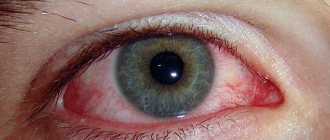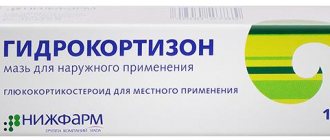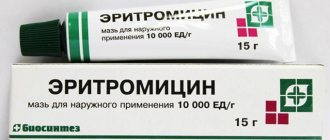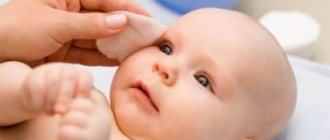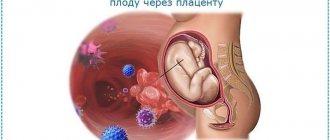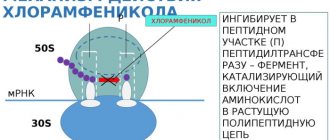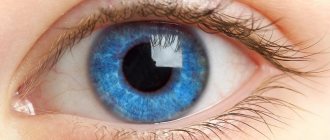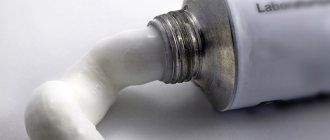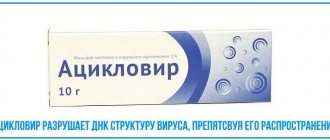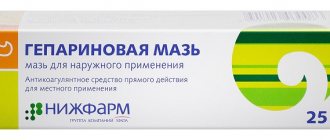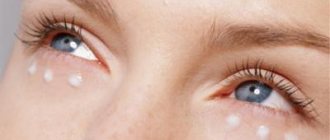special instructions
Wait at least 1 hour before using any other anti-acne medication for external use.
If your acne does not improve within 3 to 4 weeks, you should consult your doctor (it may take 2 to 3 months to achieve the full therapeutic effect).
With prolonged use, superinfection may develop.
During the treatment period, it is possible to drive vehicles and engage in other potentially hazardous activities that require increased concentration and speed of psychomotor reactions.
Features of application
The duration of the treatment course, dosage and frequency of treatment are determined based on the clinical picture. The daily dose is no more than 0.3 g, a single dose is approximately 1 cm of ointment (gel), squeezed out of the tube.
Read more How to use Gentamicin ointment - instructions and reviews
How to use:
- In gynecology - on the affected areas 3 times a day.
- For infection of the nasal mucosa - 2 - 3 times a day for 3 - 5 days.
- Gel or erythromycin ointment for acne is applied pointwise to areas of the skin that have previously been cleaned of purulent exudate with an antiseptic. They don't rub it in. The course of treatment is from 1.5 to 16 weeks.
- The surface of the burns is lubricated with a thin layer of the product when changing the bandage, for 1 - 2 months.
- For purulent wounds, the effectiveness of topical medication is enhanced by applying a tight bandage.
Ointment with erythromycin can be used in newborns from the first day of life.
For an eye infection - trachoma or chalazion - purulent formations are first opened in an inpatient or outpatient setting. You can lubricate sores in the nose, prickly heat in skin folds after secondary infection.
The instructions for using eye ointment recommend placing a 0.5 cm strip behind the upper or lower eyelid for bacterial conjunctivitis and blepharitis. First, 3 times a day for adults and children from 1 year of age, 2 times for infants, and when the symptoms of the disease weaken - 2 and 1 time, respectively. Course of treatment: from 2 weeks to 1.5 months. For trachoma, ointment is applied behind the eyelid up to 5 times a day for 4 months. The duration of use depends on the disease.
To speed up recovery, it is recommended to supplement treatment with medications for oral and injection administration with the active ingredient of the same name. The intervals between procedures are at least 4 hours.
Reviews of Erythromycin ointment
There are numerous reviews on the Internet about Erythromycin ointment, which most often refer to the use of this remedy for acne. It is noted that this medicine helps get rid of acne quite effectively by preventing the effects of bacteria.
However, there are reviews in which it is noted that Erythromycin ointment, after prolonged use, did not have the expected effect. Doctors emphasize that the ointment should be used to treat acne and other diseases according to a clear scheme and only after consultation with a specialist. Since the drug is an antibiotic, its use should be taken wisely.
Buy Erythromycin ointment 10000IU 15g in pharmacies
Latin name ERYTHROMYCIN
Release form: Erythromycin ointment. Eye ointment.
Pharmacological action Erythromycin is an antibiotic from the macrolide group. Acts bacteriostatically. The spectrum of action includes gram-positive (Staphylococcus spp., producing and non-penicillinase producing; Streptococcus pneumoniae, Streptococcus spp., Bacillus anthracis, Clostridium spp., Corinebacterium diphtheriae) and some gram-negative microorganisms (Neisseria gonorrhoeae, Neisseria meningitidis, Bordetella pertussis, Haemophilus influenzae , Brucella spp. ., Treponema pallidum, Legionella pneumophila). Most gram-negative bacteria (Escherichia coli, Shigella, Salmonella spp.), mycobacteria, small and medium-sized viruses, and fungi are resistant to Erythromycin. Erythromycin is better tolerated by patients than penicillins and can be used in cases of allergy to penicillins. Resistance of microorganisms to the drug develops quickly.
Indications Eye infections caused by sensitive microorganisms: conjunctivitis (including in newborns), ophthalmia of newborns, bacterial blepharitis, blepharoconjunctivitis, keratitis, meibomitis (styre), chlamydia, trachoma.
Contraindications: severe liver dysfunction; hypersensitivity. Use during pregnancy and breastfeeding
There is no sufficient clinical experience with the use of Erythromycin ointment during pregnancy, lactation and in infants. Therefore, treatment with the drug is possible only in cases where the expected effect exceeds the risks of possible side effects.
Special instructions Erythromycin can be prescribed for allergies to penicillins. The drug is prescribed with caution in case of impaired liver and/or kidney function. Erythromycin is not recommended to be taken with milk or dairy products. Erythromycin crosses the placenta and is excreted in breast milk, therefore, when prescribing the drug during pregnancy and lactation, the expected benefit to the mother and the potential risk to the fetus should be assessed. To prevent ophthalmia in newborns, it is not recommended to wash the eye ointment out of the eye. In children whose mothers have severe gonorrhea, erythromycin is recommended to be used simultaneously with a solution of penicillin G (aqueous) for parenteral administration.
Composition 1 g of ointment contains Active substances: erythromycin (in terms of active substance) - 10,000 units Auxiliary components: anhydrous lanolin - 0.4 g, sodium disulfite - 0.0001 g, special petroleum jelly - up to 1 g.
Method of administration and dosage Erythromycin ointment is placed behind the lower eyelid three times a day, when treating trachoma up to 5 times a day. The duration of the course of therapy depends on the severity and form of the disease, but should not exceed 2 weeks. Treatment of trachoma with erythromycin must be combined with opening of purulent follicles. When the inflammation process subsides, the drug is used three times a day. The course of treatment for trachoma should not exceed three months.
Side effects Possible development of allergic reactions and irritating effects (redness, itching). With prolonged use, a secondary infection caused by erythromycin-resistant microorganisms may develop.
Drug interactions Erythromycin is an antagonist of lincomycin, clindamycin, chloramphenicol. Able to reduce the bactericidal effect of beta-lactam antibacterial agents (penicillins, cephalosporins, carbopenems). The simultaneous use of medicinal external forms of erythromycin and abrasive substances that cause skin irritation, or with agents that cause exfoliation of the skin, may result in a cumulative irritating or drying effect.
Overdose There are no data on overdose.
Storage conditions: In a dry place at room temperature. Keep out of the reach of children.
Shelf life: 3 years.
Side effects
When treated with Erythromycin ointment, the following side effects may develop:
- irritant effect causing itching, redness;
- other allergic manifestations ;
- disorders of the digestive system: vomiting, nausea, diarrhea, dysbacteriosis, etc.;
- candidiasis;
- tinnitus and hearing loss;
- tachycardia.
With prolonged treatment, it is possible to develop a secondary infection, which was provoked by microorganisms resistant to erythromycin .
Release form and composition
The drug is available in the form of tablets, ointment and gel. Gel and ointment are used exclusively externally, through local treatment of the problem area of the body.
The ointment is yellow-brown in color and has a medium thick consistency. The medicine is supplied in laminate and aluminum tubes of 3, 5, 7, 10 and 15 g. Some manufacturers produce the composition in 30 g glass jars. Each tube comes with annotation and instructions for use.
The composition of liniment includes several active components:
- erythromycin - the main element of the ointment, is a broad-spectrum antibiotic, the concentration is 1000 units;
- Vaseline is the basis of the drug;
- lanolin;
- sodium disulfite and pyrosulfite.
The drug has a distinct, specific odor. Auxiliary ingredients increase the activity of the antibiotic and allow it to penetrate deep tissue structures.
Application for different types of dermatitis
Let's figure out how to use erythromycin ointment for dermatitis of various natures. It is recommended to use this drug only on the recommendation of a doctor. If treated incorrectly, negative microflora may become resistant to the antibiotic, which will complicate further treatment.
Perioral
The use of hormonal ointments for perioral dermatitis is contraindicated, despite the fact that these products provide a quick positive effect. However, it does not last long; after improvement, the rashes almost always appear again, and in even greater numbers.
Perioral dermatitis is a common disease, it often occurs in young women, but in principle, it can affect anyone, regardless of gender and age.
The exact causes of the skin disease are unknown; it is believed that the main reason is a predisposition to allergies, which is inherited. In addition, perioral dermatitis often develops in the following cases:
- abuse of toothpaste containing fluoride;
- use of creams containing glucocorticosteroids;
- tanning abuse;
- hormonal imbalances;
- taking hormonal medications, including contraceptives;
- pregnancy;
- severe infectious diseases, including tuberculosis.
When conducting laboratory studies of the contents of vesicles, fusobacteria are often sown. That is, perioral dermatitis can be considered an infectious disease provoked by the uncontrolled proliferation of opportunistic microflora. The infection is localized in the hair follicles. Perioral dermatitis manifests itself as a rash on the skin around the mouth, on the chin and in the nasolabial folds.
Advice! Sometimes the inflammatory process spreads to the skin under the eyes, then we are talking about a combination of perioral and periorbital dermatitis.
Treatment of perioral dermatitis is complex. For external treatment, ointments containing antibiotics are used. One of the safest drugs is an ointment containing erythromycin. It is recommended to apply the drug to the affected areas 2-4 times a day, depending on the severity of the lesion. Additionally recommended:
- stop using fluoridated pastes and cosmetics;
- for washing it is best to use tar or neutral baby soap;
- adhere to a hypoallergenic diet;
- antihistamines are used.
In addition, you need to protect the affected skin from exposure to the sun. If necessary, mild sedatives are prescribed. If external treatment is ineffective, additional oral antibiotics may be prescribed. The choice of drug, dosage and course duration are determined individually.
Pustular dermatitis
Purulent dermatitis is an inflammatory skin disease characterized by the formation of purulent pustules. The cause of the disease is a bacterial infection.
Advice! Most often, the appearance of pustules is caused by staphylococci, streptococci or pyococci.
Pustular dermatitis can be a primary disease, but often a bacterial infection becomes a complication of inflammatory skin diseases, accompanied by damage to the skin. The main reason for the development of pustular dermatitis is a decrease in local immunity. The following factors can provoke this condition:
- previous illness or the presence of a source of chronic infection in the body (for example, the presence of chronic sinusitis);
- hypothermia of the body;
- poor nutrition, strict diets;
- hormonal imbalances in the body;
- Iron-deficiency anemia;
- food poisoning, intestinal infection;
- taking medications that suppress the immune system.
In addition, the development of the disease is promoted by:
- frequent superficial damage to the skin, trauma;
- improper hygiene care, frequent use of antibacterial agents;
- excessive sweating, work associated with constant contact with water or oil products.
Treatment of pustular dermatitis is carried out comprehensively. Treatment should be prescribed by a specialist after conducting examinations to determine the nature of the infections.
For pustular dermatitis, erythromycin ointment is often used. This drug is active against most bacterial infections that provoke the development of the disease. In severe cases, systemic antibiotics may be prescribed.
Erythromycin during pregnancy: description of the drug
Erythromycin is an antibiotic that was discovered in 1952. It is one of the first representatives of macrolides and has a destructive effect on a relatively large number of pathogenic bacteria. The active substance of Erythromycin is erythromycin.
After entering the body, Erythromycin changes the interaction between amino acids, which leads to stopping the proliferation of bacteria. In this case, only a few gram-negative pathogens, viruses, and fungi can exhibit resistance.
Erythromycin is produced in the form of liquid for injection, ointment and tablets:
- The tablets contain 100 ml of erythromycin, as well as cellulose, sodium lauryl sulfate, magnesium stearate.
- The ointment for external use contains 0.01 g of erythromycin per 1 g of ointment. Among the auxiliary agents, the ointment contains paraffin and lanolin.
- Lyophilisate for intravenous injection contains 100 or 200 ml of erythromycin.
Analogs
In ophthalmological practice, Tetracycline ointment with the active ingredient of the same name and excipients - lanolin and petroleum jelly, is primarily considered as a substitute; the cost depends on the volume of the tube. Price for 10 g - from 85 rubles. If we compare whether erythromycin ointment or tetracycline ointment is better, then it should be noted: the first acts more gently, but the second is less likely to cause addiction to pathogenic microorganisms.
Other analogues:
- Long-acting ditetracycline ointment for the treatment of indolent bacterial infections. Price - from 120 rub.
- Colbiocin with a complex composition - tetracycline, sodium colistimethate, chloramphenicol. Price - from 270 rub.
- Tobrex is an ointment based on tobramycin, an antibiotic with pronounced action. Price - 190 rub.
In some cases, hydrocortisone ointment with a pronounced antipruritic and anti-edematous effect based on a glucocorticosteroid is prescribed. It alleviates painful symptoms, but does not eliminate the main cause - pathogenic microflora. Price - from 70 rub.
Analogues for dermatological use:
- Salicylic ointment with the active ingredient of the same name. Prescribed for the treatment of acne, normalizes sebum production, stops the formation of benign tumors, leads to remission of chronic dermatological diseases - psoriasis, eczema. Price - from 25 rubles.
- Argosulfate cream is based on sulfathiazole, a silver salt with a pronounced anti-inflammatory and antiseptic effect, accelerating regeneration. Price - from 320 rub.
- Syntomycin emulsion with chloramphenicol. The composition is enhanced by components that increase absorption and reduce irritation - castor oil and sorbic acid. Use during pregnancy and lactation is allowed, price - from 110 rubles.
- Tetracycline ointment for skin - contains the active component antibiotic tetracycline, and additional substances - paraffin, sodium sulfide, lanolin, petroleum jelly. It is active not only against gram-positive and gram-negative bacteria, but also against mycoplasma, clostridia, and anaerobic flora. Price - from 50 rub.
- Levomikol is an ointment with a combined composition: methyluracil, which accelerates regeneration, and chloramphenicol (the basis of the antibiotic levomycin) and a wide spectrum of action. Prescribed for purulent-inflammatory processes of epithelial tissues and mucous membranes. Price - from 190 rub.
Read more How to use Candide cream: instructions, reviews and analogues
When replacing the original drug, you must consult your doctor. It is necessary to take into account the clinical picture, the etiology of the inflammatory process and the possible development of side effects.
Erythromycin during pregnancy - reviews
Victoria:
During pregnancy I developed terrible and painful acne. I read that you can get rid of them using Erythromycin ointment. Before use, I consulted with a gynecologist, and she was not against it. I smeared acne on my face and back once a day for a week. The acne gradually disappeared, leaving no trace behind.
Oksana:
Conjunctivitis appeared unexpectedly. Eye drops did not help, so the doctor prescribed erythromycin ointment. At first I was afraid to use it, because an antibiotic during pregnancy can be dangerous, but I still decided to undergo treatment. My eyes were cured in just three days. There were no complications from the ointment.
Anna:
While in the second month of pregnancy, she fell ill with pyelonephritis. The hospital prescribed Erythromycin injections for two weeks. I was very afraid of complications, but the baby was born healthy.
Indications for use
Erythromycin ointment is used to treat infectious and inflammatory diseases caused by microorganisms sensitive to erythromycin. It is used in the treatment of infectious and inflammatory diseases that were provoked by pathogens that exhibit resistance to tetracyclines , chloramphenicol , penicillin , streptomycin .
Externally used to treat juvenile acne .
Local use of drugs is indicated for infectious and inflammatory eye diseases.
Erythromycin ointment is also prescribed for the treatment of trachoma, inflammatory processes of the mucous membrane of the eyes, for the treatment of pustular diseases of the skin, bedsores of infected wounds, burns, trophic ulcers.
pharmachologic effect
Erythromycin is an antibiotic that belongs to the group of macrolides. It has a bacteriostatic effect on the patient's body. The drug has an effect on gram-positive bacteria (Streptococcus pneumoniae, Staphylococcus spp., Bacillus anthracis, Streptococcus spp., Corinebacterium diphtheriae, Clostridium spp.).
The drug also acts on certain gram-negative microorganisms. However, most gram-negative bacteria, as well as fungi, medium and small viruses, are resistant to the effects of Erythromycin.
Patients tolerate Erythromycin better than penicillins . Therefore, the drug can also be prescribed in case of allergy to penicillins. When treated with the drug, resistance of microorganisms to it develops relatively quickly.
